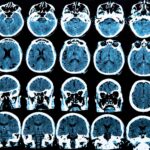Every May, Celiac Awareness Month increases the public’s knowledge of the autoimmune disorder celiac disease. According to the University of Chicago Celiac Disease Center, “When a person who has celiac disease consumes gluten, a protein found in wheat, rye, and barley, the individual’s immune system responds by attacking the small intestine and inhibiting the absorption of important nutrients into the body.” Those with the disease must adhere to a strict, no-gluten diet, as there is no current cure. Complications including infertility and osteoporosis can occur if the individual is not tested and treated, so awareness is crucial.
History of Celiac Awareness Month
The history of celiac disease reaches all the way back to the Neolithic period, around 9500 BCE, when humans began to cultivate grains. However, there was no name given to the disease until 100AD, when the Greek physician Areteaus first described celiac disease as ‘koiliakous,’ or abdominal infection. Though he may have correctly pinpointed some aspects of the disease, he had a long way to go – he thought one of the possible causes was simply consuming too much cold water.
Samuel Gee, an English pediatrician, gave the first modern definition of celiac disease in 1887 in a lecture at Hospital for Sick Children in London. Still, however, science had not landed on what it was in the diet that exactly caused these debilitating digestive issues.
American physician Christian Herter came slightly closer in his book on childhood celiac disease, published in 1908. He noted that fat was better tolerated by the body than carbohydrates. In the 1920s, American pediatrician Sidney Haas continued to experiment with dietary changes for those with celiac and championed the “banana diet” as the cure. He didn’t seem to think it was important that while the diet focused on bananas, carbohydrates were notably left out – there was an incorrect conclusion drawn from correlation.
During the Dutch famine in the 1940s, flour was scarce and Dutch physician Willem Dicke finally made the carbohydrate connection. The specific role played by gluten in celiac disease was ultimately determined by a team of English researchers in 1952.
Between 1960 and 1965, more qualities of celiac were discovered, and its formal character was written by a panel of doctors in the late 1960s. The one thing that these criteria did not account for was the fact that children often had antibodies in their blood after eating gluten. The next 20 years saw extensive research into the genetic and autoimmune qualities of the illness, and by the 1990s celiac disease was officially recognized as an autoimmune disorder.
Today, even with ever-improving science and technology, there is no cure for celiac disease. Those who have the autoimmune disorder, show symptoms, and are tested must adopt a gluten-free diet. However, many individuals with celiac disease are never tested and sometimes never even symptomatic. Celiac Disease Awareness Month helps to raise money for research into a cure.
Celiac Awareness Month timeline
Formalized in 1969 by a panel of doctors, the ‘Interlaken Criteria’ served as the diagnostic standard for recognizing celiac disease for 20 years
After performing a biopsy of the duodenum, Margot Shiner made the connection between celiac disease and the intestinal damage she was observing.
In 1914, Sindey Haas developed what was considered the cornerstone treatment for treating celiac disease and anorexia - a diet heavily reliant on bananas. The diet also happened to include a gluten-free diet, but he was a bit more focused on the bananas.
English pediatrician Samuel Gee gave the first modern description of celiac disease in London in 1887.
Ancient Greek physician Areteaus first describes celiac disease, calling it koiliakous (abdominal) infection.
Celiac Awareness Month FAQs
When is National Gluten-Free Day?
On January 13, we observe National Gluten–Free Day alongside our gluten–free friends!
Are there events for Celiac Disease Awareness Month?
During May there are many events put on by organizations dedicated to celiac disease awareness. These include 5K and 10K run runs, webinars, “Ask a Dietician” events on Twitter, and even a Catwalk for Celiac fashion show. Events change yearly, so check out their websites and see what you can be involved in.
Where can I find more information on Celiac Disease Awareness Month?
Some great resources on the disease and Celiac Disease Awareness Month can be found at celiac.org and beyondceliac.org.
How to Observe Celiac Awareness Month
Donate to Celiac Disease Research
One of the ultimate goals of Celiac Disease Awareness month is raising funding to develop a cure. Raising awareness is fantastic, but raising money is a direct way to make a big difference. Every year, $ 1.45 billion is raised for celiac disease research, and you can contribute by donating to organizations like Beyond Celiac and the Celiac Disease Foundation.
Spread awareness online
You can spread awareness on any platform from Facebook to Instagram to an online blog. Think of how many people you’re connected with - sharing a simple post or fact about celiac disease could be monumental in spreading awareness.
Share your Celiac story
If you have experience with celiac disease, consider sharing your story this month. There are many myths and quite a bit of confusion surrounding the illness, and unfortunately, many of the individuals who may have celiac disease go untested for it. Sharing your story can help spread awareness and understanding, which ultimately improves treatment for those affected.
5 Interesting Facts About Celiac Awareness Month
In the Family
5-22% of those with celiac disease have an immediate family member who also has it.
Frequently Misdiagnosed
It’s estimated that 83% of individuals with celiac disease are not diagnosed or misdiagnosed with a different disease.
Gluten-Free Growing
In 2017, gluten-free food sales reached over $4.5 billion, and are only expected to increase with the awareness of celiac disease and screening.
A Long Wait
On average, individuals with celiac disease must wait between 6-10 years to be properly diagnosed with the disease.
Celiac Can Develop Anytime
Though it is genetic, celiac disease can develop anytime in a person’s life after they ingest gluten-containing food or medicine.
Why Celiac Awareness Month is Important
Increased Screening
Another great way to honor this month? Go get screened if you think you have a chance of having celiac disease. You can even screen yourself with BeyondCeliac.org’s self-screening checklist. Left untreated, celiac disease can cause dangerous complications, and a whopping 97% of celiac cases are estimated to go undiagnosed in the United States. If you were looking for a reason to be screened, here it is - better to be on the safe side.
Learn about the 1%
Celiac disease affects 1% of Americans, which might not seem like a lot - until you realize that’s over 3 million people. Take celiac disease Awareness Month as an opportunity to learn about this widespread illness.
It raises money for the cure
There is currently no cure for celiac disease, and those affected have to be extremely diligent with what they eat and very aware of any symptoms arising. The money-raising campaigns and individual contributions spurred on by Celiac Disease Awareness Month are crucial to funding research that will end this disease.
Celiac Awareness Month dates
| Year | Date | Day |
|---|---|---|
| 2026 | May 1 | Friday |
| 2027 | May 1 | Saturday |
| 2028 | May 1 | Monday |
| 2029 | May 1 | Tuesday |
| 2030 | May 1 | Wednesday |














































































































































































